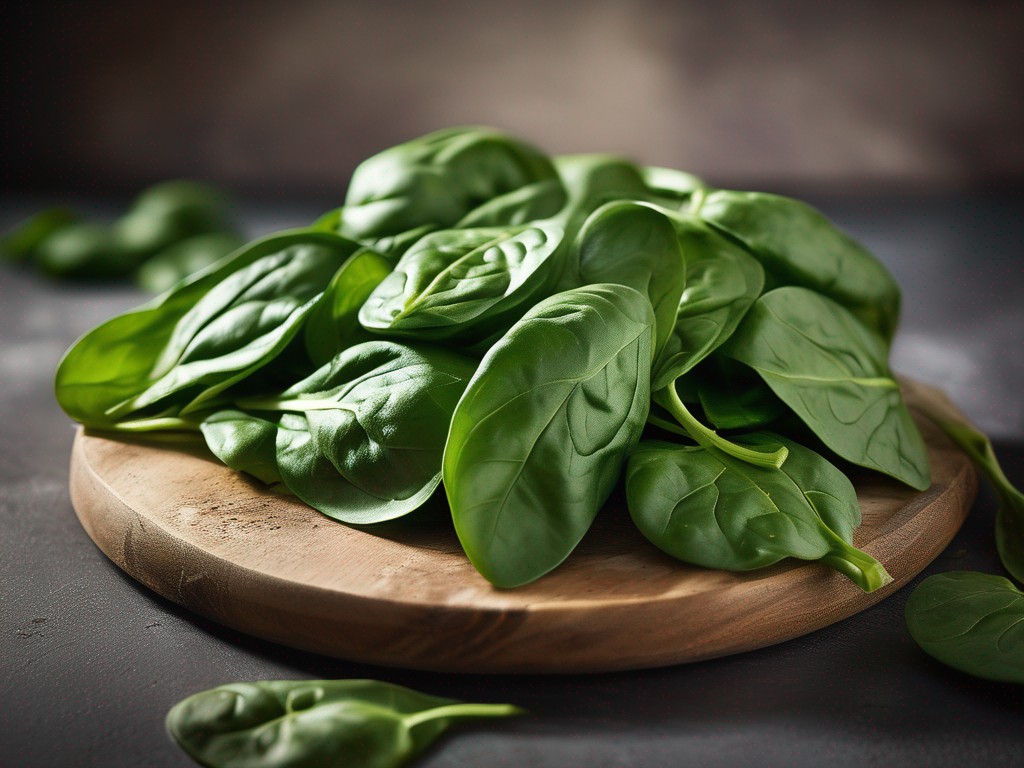
Is Your Fresh Spinach Still Safe to Eat?
Get Your Free Food Safety Cheat Sheet
30 most common foods with instant answers. Print it and stick it on your fridge—completely free!
Is Your Fresh Spinach Still Safe to Eat?
Fresh spinach is a nutritious and versatile leafy green that can add a burst of flavor and nutrients to your meals. However, like any perishable food item, spinach can spoil if not stored properly. In this guide, we will discuss how to tell if your fresh spinach is still good to eat, as well as provide tips on storage and food safety. (Fresh spinach)
How Long Does Fresh Spinach Last?
Fresh spinach typically has a shelf life of about 3-5 days when stored properly in the refrigerator. However, several factors can affect its freshness and quality, including temperature, moisture, and exposure to air.
Signs of Spoilage in Fresh Spinach
Here are some indicators that your fresh spinach may have gone bad:
-
Slimy Texture: If the leaves feel slimy or mushy to the touch, it is a sign that the spinach is past its prime.
-
Discoloration: Look for any dark spots, brown or yellow patches, or wilted leaves. These are signs of decay and spoilage.
-
Unpleasant Odor: Fresh spinach should have a mild, earthy scent. If it smells off or has a foul odor, it is best to discard it.
-
Mold Growth: Visible mold on the leaves is a clear indication that the spinach is no longer safe to eat.
Tips for Checking Fresh Spinach
To ensure that your fresh spinach is still good to eat, follow these tips:
-
Inspect the Leaves: Check the leaves for any signs of wilting, discoloration, or sliminess.
-
Smell the Spinach: Give the spinach a sniff to see if it has a fresh, earthy aroma or if it smells off.
-
Feel the Texture: The leaves should be crisp and firm. Avoid spinach that feels mushy or slimy.
-
Look for Expiry Date: If the spinach is packaged, check the expiration date to ensure freshness.
Proper Storage of Fresh Spinach
Proper storage is key to extending the shelf life of fresh spinach and maintaining its quality.
Storage Tips:
-
Remove Excess Moisture: Excess moisture can cause spinach to wilt quickly. To prevent this, gently pat the leaves dry with a paper towel before storing.
-
Store in a Perforated Bag: Place the spinach in a perforated plastic bag or a container with ventilation to allow for airflow.
-
Refrigerate Promptly: Store fresh spinach in the refrigerator as soon as possible after purchasing or harvesting.
-
Optimal Temperature: Keep spinach in the crisper drawer of the refrigerator at a temperature of around 32-40°F (0-4°C).
Creative Ways to Use Fresh Spinach
Fresh spinach is not only nutritious but also incredibly versatile in the kitchen. Here are some creative ways to incorporate fresh spinach into your meals:
- Spinach Salad with Strawberries and Feta Cheese
- Spinach and Feta Stuffed Chicken Breast
- Spinach and Mushroom Quiche
- Spinach and Chickpea Curry
- Spinach and Artichoke Dip
Conclusion
By following these tips on checking freshness, proper storage, and creative usage, you can ensure that your fresh spinach stays safe to eat and retains its flavor and nutrients. Remember to always trust your senses and discard any spinach that shows signs of spoilage. Enjoy the goodness of fresh spinach in your meals while keeping food safety a top priority. (Fresh spinach)
Authoritative Food Safety References
These agencies and university labs inform every tip and health precaution we publish.
USDA FoodKeeper – Cold Storage Guidelines
Official refrigerator, freezer, and pantry timelines maintained by the U.S. Department of Agriculture.
Visit USDA FoodKeeperFDA Produce Safety Rule & Grower Guidance
Field-to-fridge handling practices that prevent contamination of fruits, vegetables, and leafy greens.
Visit FDA Produce SafetyCDC Foodborne Illness Prevention Hub
Surveillance-backed guidance on pathogens, symptoms, and steps to reduce foodborne illness risk.
Visit CDC Food SafetyUC Davis Postharvest Technology Center
University research detailing optimal storage atmospheres for produce after harvest.
Visit UC Davis PostharvestPenn State Extension – Home Food Preservation & Safety
Peer-reviewed extension bulletins on safe canning, chilling, and reheating practices.
Visit Penn State ExtensionGet Your Free Food Safety Cheat Sheet
30 most common foods with instant answers. Print it and stick it on your fridge—completely free! Want more? Upgrade to the complete guide with 70+ foods.
Scan your food directly and get instant safety info using our AI-powered camera feature.